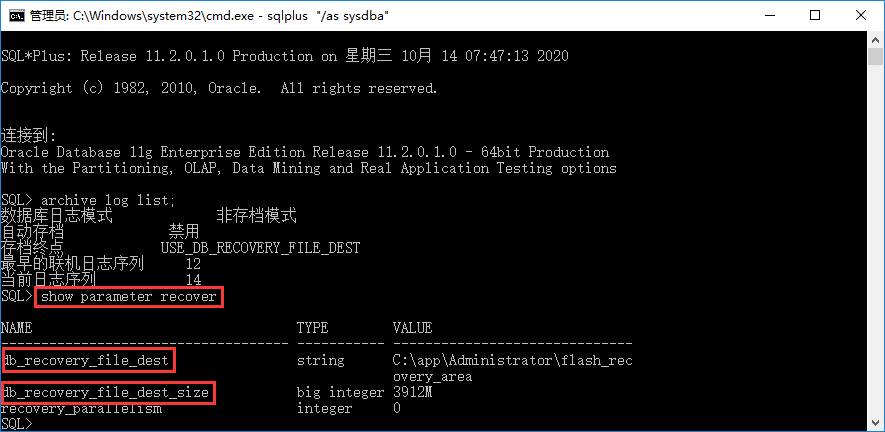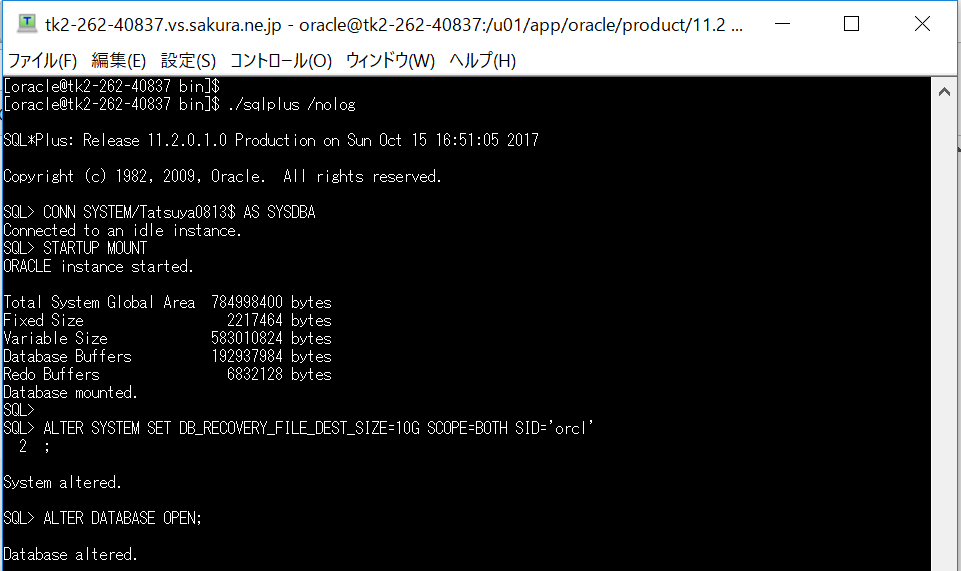
- #Alter system db recovery file dest size archive
- #Alter system db recovery file dest size code
SQL> select estimated_flashback_size/1024/1024/1024 "EST_FLASHBACK_SIZE(GB)" from v$flashback_database_log.
#Alter system db recovery file dest size archive
Note that this is the size of the flashback logs only and does not include space used by archive logs and RMAN backups. This can be queried from v$flashback_database_log, the estimate gets better with age. Restore points can be dropped with the database open using the following commandsĪfter enabling flashback logging, Oracle keeps track of the amount of logging generated.

These can be remedied by issuing the TRUNCATE TABLE command against the affected object(s).ġ.
Any tables created and updated without the LOGGING option will be suseptable to block curruption errors when the database is flashed back. Run crs_stat -t to confirm that the database is backup okay. One one of the nodes run, srvctl stop database -d -o immediate. For RAC instances use the following commands. SQL> flashback database to restore point ģ. For a non RAC environment use the following commands to flashback to a restore point. SQL> select name, time,guarantee_flashback_databse from v$restore_point Ģ. If so, put the database into mount mode now. You may want to create the restore point in mount mode. Use the optional GUARANTEE FLASHBACK DATABASE clause to ensure that the restore point is not aged out of the flashback recovery area (FRA) as dictated by the db_flashback_retention_target parameter.ġ. Createing a Restore pointĬreate a restore point whenever the database is at a state that it may needed to be flashed back to. 

This worked example assumes the database is using ASM to manage its storage.
SQL> select flashback_on from v$database Ĭreating and Using Flashback Restore points. Run the following commands to determing Flashback is turned on. Only run alter database flashback on if there is a requirement to flashback to ANY previous point in time.ĭetermine if Flashback Database is Already Enabledġ. Set the db_flashback_retention_target to an appropriate time, in mins, to retain flashbackability. Set the db_recovery_file_dest_size to an appropriate size for the amount and size of the testing required. Set the db_recovery_file_dest to an appropriate location for the flashback recovery files. SQL> alter system set db_flashback_retention_target=2880. If flashback to any previous point in time is required, then turn flashback on using the following command. SQL> alter system set db_recovery_file_dest_size=100G SCOPE=spfile. SQL> alter system set db_recovery_file_dest='+' SCOPE=spfile Ģ. Or another mode, where Oracle only tracks the "before" images of changed blocks, so that you can flashback to the start of the restore point. One mode where you log every change to every block, which allows you to flahsback the database to any previous point in time. Rather than having to restore the database after each test, flashback database allows the database to be rewound very quickly to a previous point in time.įlashback database can be effectively run in two modes. #Alter system db recovery file dest size code
This feature is particularly useful for test, V&P, and development environments where you may wish to try out a new piece of code or fuctionality over and over, refining as you go.

Flashback database is useful feature introduced with 10g that allows the database to be effictively rewound to a previous point in time.








 0 kommentar(er)
0 kommentar(er)
